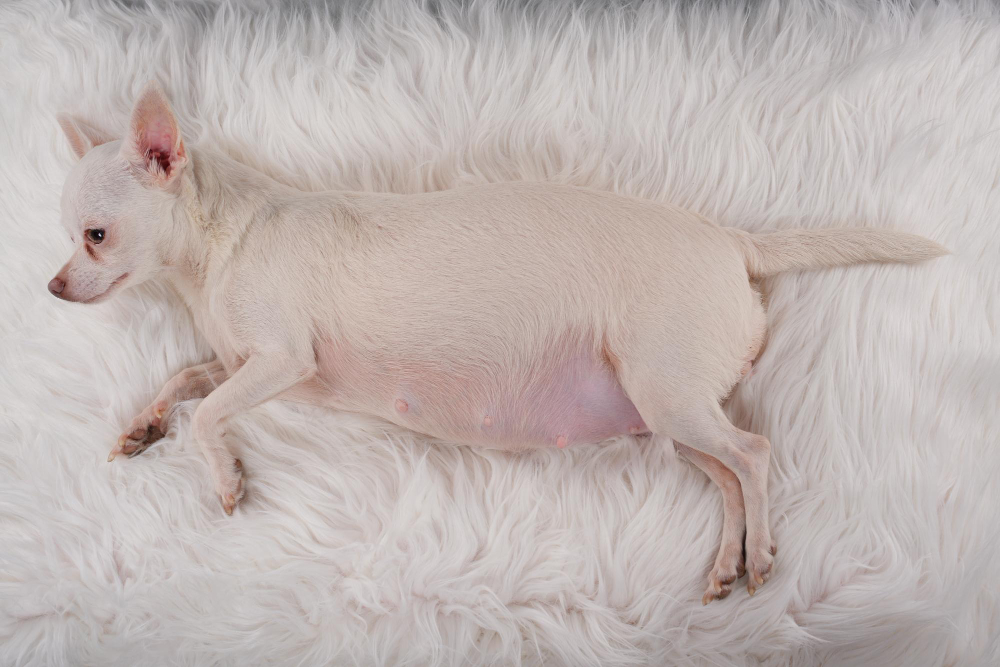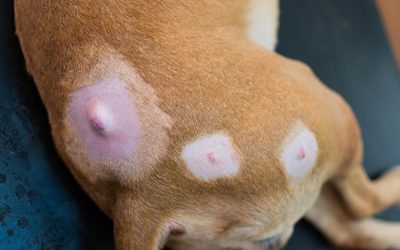Rashes on Your Dog’s Belly: Causes, Treatments & Prevention

Dogs are curious adventurers, always eager to explore the world around them—whether it’s rolling in the grass, playing in the dirt, or lounging on their favorite cozy spot. While these activities bring joy to your furry friend, they also expose them to potential irritants and allergens. One common issue pet parents often notice is a rash on their dog’s belly.
These rashes can range from mild redness to more serious inflammation, causing discomfort for your dog. Knowing the causes, treatments, and preventive steps can help keep your pup healthy and happy.
Let’s explore why these rashes occur, what to watch for, and how you can help your dog feel their best.
Why Are Rashes on a Dog’s Belly Common?
A dog’s belly has delicate, thinner skin with less fur for protection compared to other parts of their body. This makes it more prone to irritation from surfaces like grass, carpets, or even cleaning products used on floors. Because their belly often touches the ground, it’s also a prime spot for exposure to allergens, parasites, or injuries.
Left untreated, these rashes can escalate, leading to infections or long-term skin issues.
What Causes Rashes on Your Dog’s Belly?
1. Allergies
- Environmental Allergens: Pollen, mold, and grass are common culprits, especially during seasonal changes. Symptoms often include watery eyes, sneezing, or itchy skin.
- Food Allergies: Some dogs react to certain ingredients like chicken, beef, or dairy, leading to rashes and itchy skin.
- Spot the Signs: Look for red patches, excessive licking, or overall itchiness. Allergies may also trigger recurring skin issues.
2. Parasites
- Fleas: Just one bite from a flea can cause a severe reaction, leading to intense itching and rash.
- Mites: Mange, caused by mites, results in itching, redness, and even hair loss, especially on the belly.
- Ticks: Ticks can irritate the skin and sometimes transmit diseases. Look for red, raised spots where ticks may have bitten.
3. Skin Infections
- Bacterial: Conditions like pyoderma can cause inflamed, pus-filled lesions.
- Fungal: Yeast thrives in warm, moist areas, causing redness and a distinct odor. Ringworm presents as circular patches of scaly skin and hair loss.
4. Irritants
- Chemical Exposure: Cleaning products, detergents, or garden sprays can irritate your dog’s sensitive skin.
- Physical Causes: Friction from rough surfaces like concrete can lead to abrasions.
5. Other Medical Conditions
- Hormonal imbalances or autoimmune diseases can weaken the skin, making it more prone to rashes.
- Heat rash or sunburn can occur after prolonged exposure to the sun, especially in dogs with light-colored or thin coats.
Diagnosing Your Dog’s Belly Rash
As explained By Anna Burke in the AKC article: ‘The best way to determine the cause of your dog’s belly rash is to make an appointment with your veterinarian, who will perform some diagnostic tests based on your dog’s age, breed, overall health, and symptoms.
Veterinarians use skin samples, blood tests to detect underlying conditions, fungal cultures, antibiotic sensitivity tests, and in some cases, allergy testing to accurately diagnose skin conditions in dogs. Your veterinarian may refer you to a dermatologist for further testing and treatment.
Treating Belly Rashes
Once your veterinarian has diagnosed the cause of your dog’s belly rash, she will discuss your treatment options.
Bacterial skin infections are typically treated with a course of antibiotics. Your veterinarian may want to perform an additional test to determine the best type of antibiotic to treat your dog’s rash and avoid building up antibiotic resistance, and could prescribe you with medicated shampoos or scrubs to help manage the infection.
Yeast and other fungal infections are treated with antifungal medications and shampoos.
Allergies, depending on the cause, can be more difficult to treat, and may involve treating both the allergy and any secondary skin infections that developed. Your vet may recommend a dog skin soother balm to help ease the discomfort.
Conditions such as hypothyroidism and Cushing’s disease, like allergies, require treatment of the condition itself and the skin rash. Your dog may require additional blood tests and follow-up monitoring.
In some cases, your dog’s belly rash could be the result of a resistant infection, such as methicillin-resistant Staphylococcus aureus (MRSA). It is very important to follow your veterinarian’s instructions about treating resistant infections, and you will need to be patient, as it may take time for the infection to heal.’
How Can Pet Insurance Help You if Your Dog Needs an Emergency Treatment?
Pet insurance can be a valuable tool in managing the costs of treating a cat’s veterinary expenses. By having a pet insurance policy in place, you can have peace of mind knowing that you can provide medical care for your furry companion without worrying about the financial burden. Pet insurance can help cover the costs of veterinary consultations, diagnostic tests, medications, and even specialized treatments if required.
Reimbursement
This method is the most common for pet insurance companies. You pay out of pocket for the veterinarian bill, and then the insurance company reimburses you for what’s covered under the insurance plan. The steps look like this.
- You pay the vet bill after your cat’s visit.
- You fill out the pet insurance claim form.
- Submit the claim form and other required documentation to the insurer.
- After the claim is approved, you will be reimbursed for eligible expenses.
What Does Odie Pet Insurance Cover?
Pet insurance covers various veterinary expenses, providing financial protection and peace of mind for pet owners. Here are the details of the coverage options offered by Odie Pet Insurance:
Illness & Injury Plan
The Illness & Injury Plan is an all-inclusive insurance plan designed to cover a wide range of medical needs for your pet. This plan includes comprehensive coverage for various illnesses, injuries, and veterinary services. Some of the covered items include:
- Veterinary exams and consultations
- Diagnostics (e.g., X-rays, lab tests)
- Prescribed medications
- Surgeries and hospitalization
- Rehabilitation, acupuncture, or chiropractic treatments
- Medically necessary supplies
- Euthanasia and cremation
The Wellness Plan
The Wellness Plan is a monthly membership that focuses on preventive care and covers routine veterinary services.
- Provides reimbursements for routine care items such as wellness visits (exams and vaccines), testing and parasite prevention, dental cleanings and at-home dental care, vitamins, supplements, and more.
- Through Odie’s partnership with Petivity, a leader in smart pet products and proactive care, Wellness Plan members can also receive reimbursements for Petivity devices and health kits, as well as eligible Purina food and supplements.
- Total reimbursement up to $700 per year.



